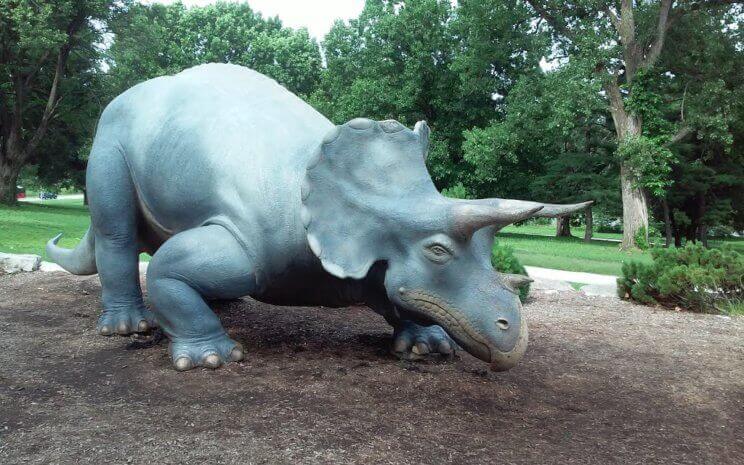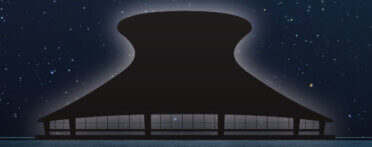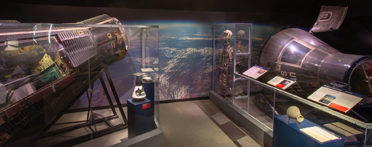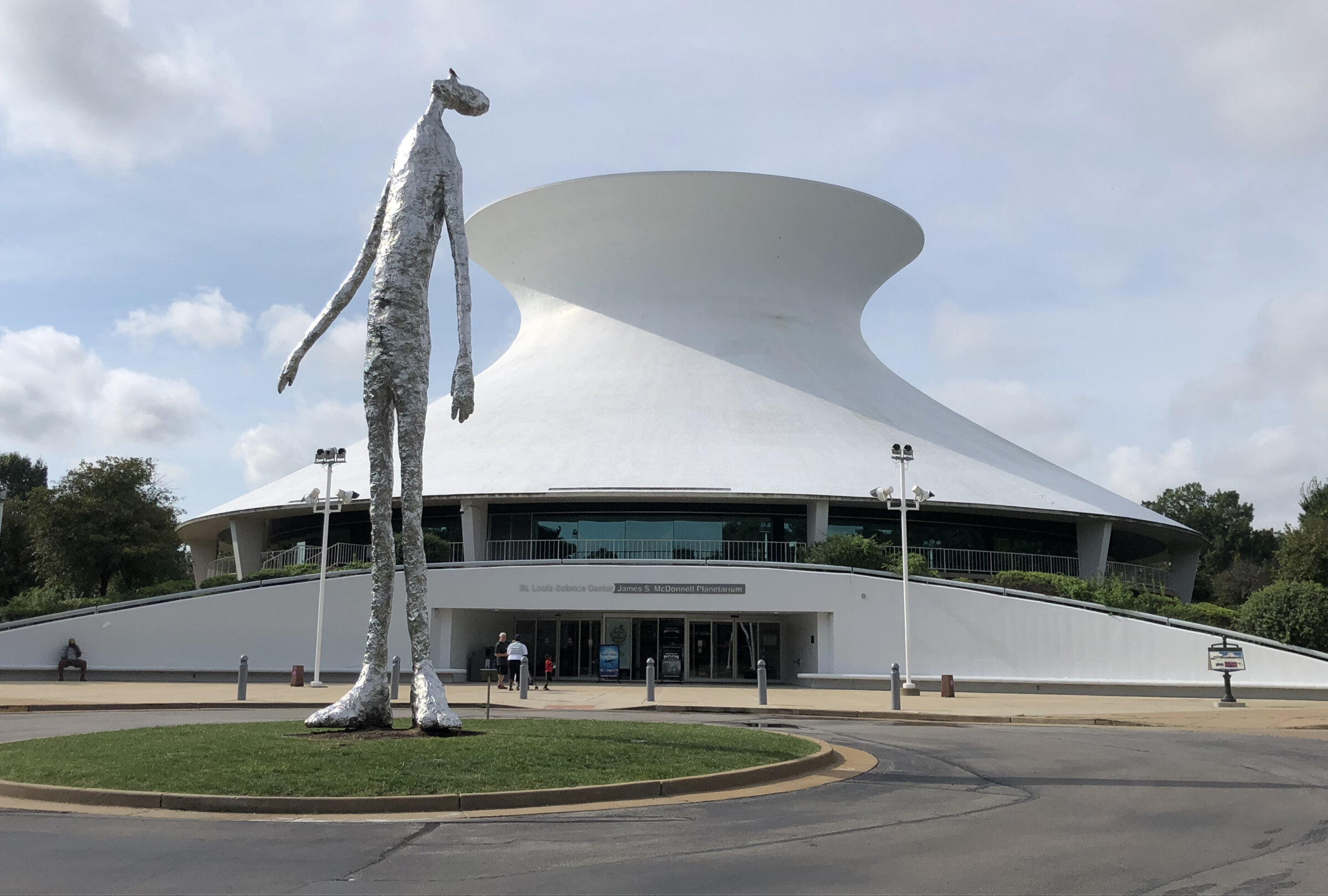
There’s more to explore outside.
F/A-18B Hornet
Just like all F/A-18s, the F/A-18B Hornet on display outside of the McDonnell Planetarium was manufactured here in St. Louis at McDonnell Douglas, now Boeing Defense, Space & Security. F/A-18s were developed in the 1970s in response to the U.S. military’s requirements for a lightweight fighter jet. The F/A-18B is a dual-seater, twin engine, mid-wing, multi-mission tactical aircraft.
F/A stands for Fighter/Attack. The aircraft is 56 feet long, 40 feet 5 inches wide, and 15 feet 4 inches tall, and clocks a top speed of Mach 1.8, or just over 1300 miles per hour. The F/A-18B Hornet can fly at an altitude of 50,000 feet, and can fly three times more hours without failure than other naval tactical aircraft, requiring half the maintenance time.
The Hornet on display was manufactured and delivered to the U.S. Navy in August of 1983. The B model designates it as a training aircraft. This particular aircraft was used for aerial demonstrations by the U.S. Navy’s Flight Demonstration Squadron: the Blue Angels. The jet is a permanent loan from the National Naval Aviation Museum in Pensacola, Florida. You can view this remarkable aircraft at the Science Center thanks to the generous support of Innoventor Engineering and The Boeing Company.
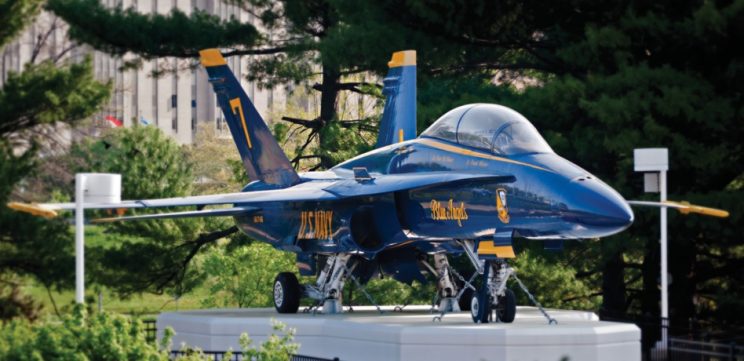
Looking Up by Tom Friedman
This 33.3-foot, 7,000-pound sculpture was installed by the Gateway Foundation and Acme Erectors construction contractors in 2017. Looking Up represents humans pondering space and the stars, and is the third sculpture in series of three. The first is permanently installed at the Laguna Gloria Campus of The Contemporary Austin, TX. The second is installed on Chicago’s lakefront through September 2018.
Looking Up is made of polished stainless steel, and was texturized by a process of molding and lost-wax casting. The artist is a St. Louis native and an alum of Washington University in St. Louis. Looking Up is on permanent loan.

Dinosaurs
Trek behind the McDonnell Planetarium to catch a glimpse of a Triceratops and Tyrannosaurus rex. These figures were made by Jonas Studios from molds originally made for the Sinclair Oil Company’s Dinoland Exhibition at the 1964-1965 World’s Fair in New York. Both dinosaurs were originally installed in Clayton’s Oak Knoll Park in 1968, but were re-installed and rededicated on the Planetarium Grounds in 1987.
You may notice that the T-Rex outside of the Planetarium is standing upright with its tail dragging on the ground, a posture that was considered scientifically accurate when the figure was created in 1964. Since the 1970s, scientists have agreed that T-Rex stood more like a bird, with its tail in the air and head pitched forward, although popular depictions of the T-Rex didn’t begin to catch up until the 1990s. The posture of the T-Rex in our Ecology & Environment gallery is scientifically accurate.
